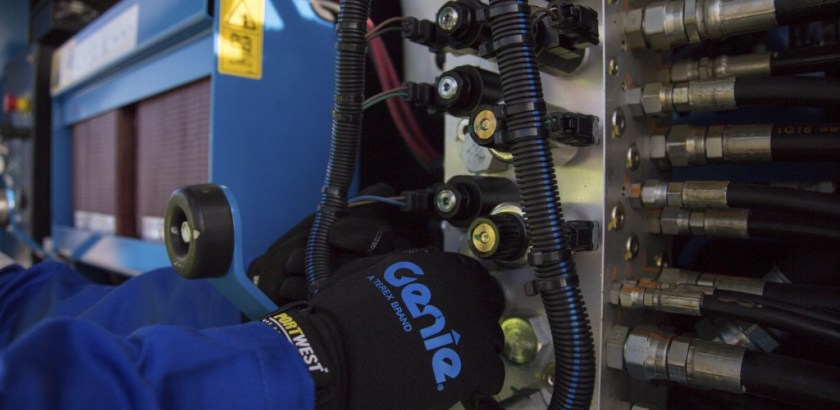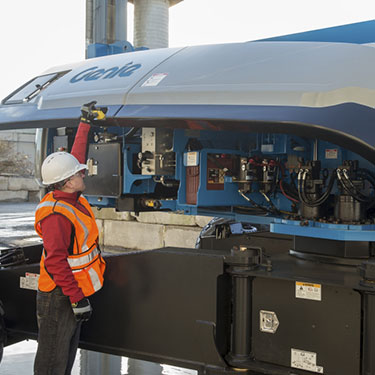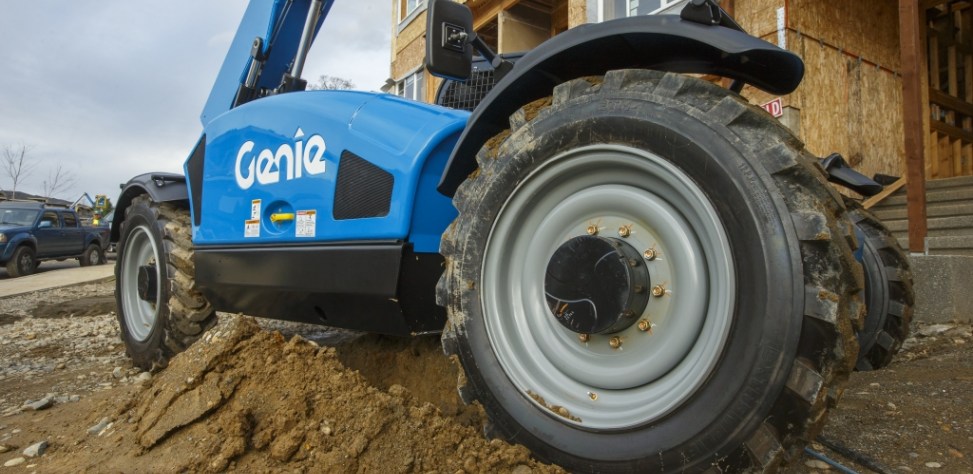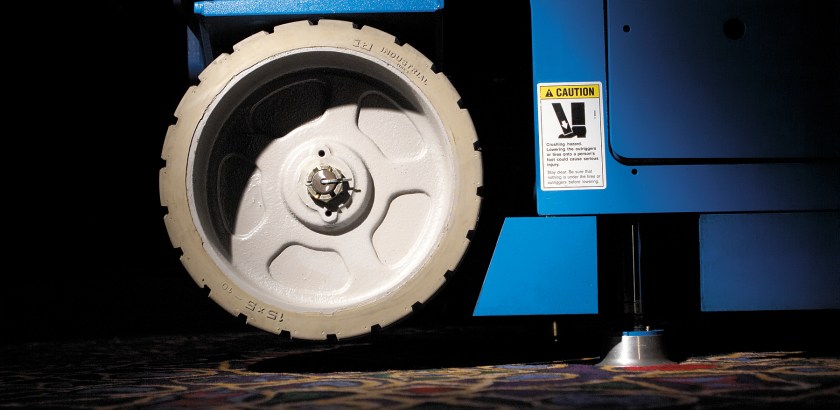Tire Talk: Inspection and Replacement Tips for Aerial Work Platform Tires
by Matt Molnar - Product Support Specialist On Sep 1, 2016, 03:00 AM
Subscribe To Aerial Pros
Filter by tags
 A lot is riding on your aerial work platform (AWP) tires. They are the vital link between the machine and the ground providing the traction, stability, flotation and machine control required for operating safely. Tires get you to where you want to go, both non-marking that leave no traces behind and treaded to traverse rough terrain.
A lot is riding on your aerial work platform (AWP) tires. They are the vital link between the machine and the ground providing the traction, stability, flotation and machine control required for operating safely. Tires get you to where you want to go, both non-marking that leave no traces behind and treaded to traverse rough terrain.
The nature of where these machines operate — from congested construction sites to rough outdoor terrain — can lead to tire damage, which requires close attention and frequent inspection.
Following the inspection and replacement requirements in the Genie® AWP Manuals will help give you the confidence that your lift will take you where you need to be:
Tire type…
- First and foremost, know what type of tires are on your lift. Certain lifts come standard with solid hard-rubber non-marking tires, whereas a rough-terrain lift could be equipped with one of several tire types: Solid non-marking, lug pattern (foam- or air-filled) or high flotation (foam- or air-filled).
Inspection tips…
- Inspect tires for damage to the tread area and sidewalls (cuts, tears, missing chunks, etc.). If there is any damage to the tire, it should be replaced.
- Inspect solid rubber tires. Ensure the solid tire is completely bonded to the rim. If there are any signs of tire separation from the rim, the tire should be replaced.
- Ensure a static strap is installed on the machine when inspecting units with non-marking tires. When the carbon is removed from the non-marking tire (gray or white), a static charge build-up occurs. The static strap will dissipate this charge to help protect onboard electronics.
 Tire replacement…
Tire replacement…
- Replace with like tires. Tires provide a part of the machine’s stability and offer traction. Replacing with like tires approved by Genie, or the manufacturer of your unit, maintains the machine’s designed stability. It is important to note that foam-filled and air-filled tires must be replaced with like tires. Never mix foam-filled and air-filled tires on the same unit.
- Not all foams are created equal. Not just any foam will work, and your service technician should check with Genie, or the manufacturer of your unit, to ensure that the right type of foam is used.
One parting tip related to your tires: Make sure the lug nuts are properly torqued prior to sending the unit out on a jobsite. The lug nuts should be torqued whenever a tire is replaced or during the scheduled annual inspection.
Related Posts

Maintenance Made Easy
Equipment maintenance vs. rental: The delicate balance every rental company plays.
Continue Reading

New Genie Boom Maintenance Manuals
When it comes to maintaining your equipment, Genie just made completing routine tasks a whole lot easier.
Continue Reading

Selecting the Right Tires for your Telehandler
While tires are not likely the first thing you think about when spec’ing a telehandler, you should spend a few minutes thinking through your options to ensure you get the right type for the needs of your customers.
Continue Reading


